-
 Bitcoin
Bitcoin $99,594.2189
-3.59% -
 Ethereum
Ethereum $2,188.5793
-9.00% -
 Tether USDt
Tether USDt $1.0001
-0.02% -
 XRP
XRP $1.9745
-5.82% -
 BNB
BNB $608.9511
-3.73% -
 Solana
Solana $130.4575
-5.93% -
 USDC
USDC $1.0000
0.01% -
 TRON
TRON $0.2637
-3.59% -
 Dogecoin
Dogecoin $0.1493
-5.97% -
 Cardano
Cardano $0.5322
-6.72% -
 Hyperliquid
Hyperliquid $33.9044
3.33% -
 Bitcoin Cash
Bitcoin Cash $449.6411
-5.46% -
 UNUS SED LEO
UNUS SED LEO $8.9629
0.43% -
 Sui
Sui $2.3943
-8.35% -
 Chainlink
Chainlink $11.4402
-7.83% -
 Stellar
Stellar $0.2241
-6.49% -
 Avalanche
Avalanche $16.1489
-4.24% -
 Toncoin
Toncoin $2.7182
-5.94% -
 Shiba Inu
Shiba Inu $0.0...01040
-5.72% -
 Litecoin
Litecoin $78.7882
-4.07% -
 Ethena USDe
Ethena USDe $1.0004
-0.01% -
 Hedera
Hedera $0.1305
-7.45% -
 Monero
Monero $297.0030
-5.32% -
 Dai
Dai $0.9997
-0.02% -
 Polkadot
Polkadot $3.1834
-6.03% -
 Bitget Token
Bitget Token $3.9788
-7.03% -
 Uniswap
Uniswap $6.1327
-10.62% -
 Pepe
Pepe $0.0...08689
-8.30% -
 Pi
Pi $0.4826
-9.65% -
 Aave
Aave $219.8043
-9.69%
How to read the descending wedge of CCI? Can I buy the bottom?
The descending wedge on the CCI is a bullish pattern; traders should confirm breakouts with volume and set stop-losses for risk management.
May 24, 2025 at 09:35 am
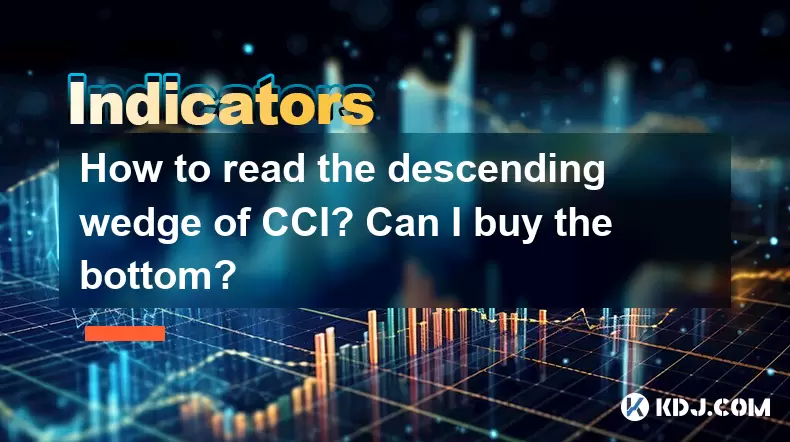
Understanding the Descending Wedge Pattern
The descending wedge is a bullish chart pattern that can be identified in various financial markets, including the cryptocurrency space. This pattern forms when the price of an asset consolidates between two converging trend lines, with both lines sloping downwards. The upper trend line represents resistance levels, while the lower trend line indicates support levels. As the pattern develops, the price action within the wedge narrows, signaling a potential breakout.
In the context of the Commodity Channel Index (CCI), a descending wedge can be observed when the CCI indicator itself forms this pattern. The CCI is a momentum-based technical indicator that measures the difference between an asset's price and its statistical average. Traders often use the CCI to identify overbought and oversold conditions in the market.
Identifying the Descending Wedge on CCI
To identify a descending wedge on the CCI, traders need to look for the following characteristics:
- Two converging trend lines: Plot two trend lines on the CCI chart. The upper trend line should connect the declining peaks, while the lower trend line should connect the declining troughs.
- Downward slope: Both trend lines should slope downwards, indicating that the CCI is moving lower within the wedge.
- Narrowing price action: As the pattern progresses, the distance between the two trend lines should decrease, signaling a potential reversal.
Can You Buy the Bottom Using the Descending Wedge of CCI?
The question of whether you can buy the bottom using the descending wedge of the CCI is nuanced. The descending wedge is generally considered a bullish signal, suggesting that a breakout to the upside is imminent. However, buying at the exact bottom is challenging and often risky.
Here are some considerations:
- Breakout confirmation: Many traders wait for a breakout above the upper trend line of the wedge before entering a long position. A confirmed breakout can provide a higher probability of a successful trade.
- Volume confirmation: An increase in trading volume during the breakout can further validate the bullish signal.
- Risk management: Even with a confirmed breakout, it's essential to implement proper risk management strategies, such as setting stop-loss orders, to protect against potential false breakouts.
How to Trade the Descending Wedge of CCI
Trading the descending wedge of the CCI involves several steps:
- Identify the pattern: Use technical analysis tools to plot the descending wedge on the CCI chart.
- Monitor for a breakout: Keep an eye on the price action as it approaches the apex of the wedge. A breakout above the upper trend line can signal a potential buying opportunity.
- Confirm the breakout: Look for increased volume and other technical indicators that support the bullish move.
- Enter the trade: Once the breakout is confirmed, consider entering a long position. Set your entry price just above the upper trend line to avoid false breakouts.
- Set stop-loss and take-profit levels: Implement a stop-loss order below the lower trend line to manage risk. Set a take-profit level based on your analysis of potential resistance levels.
Practical Example of Trading the Descending Wedge of CCI
Let's consider a practical example of how to trade the descending wedge of the CCI using Bitcoin (BTC):
- Identify the pattern: You notice that the CCI for BTC has formed a descending wedge over the past few weeks. The upper trend line connects the declining peaks at -100, -80, and -60, while the lower trend line connects the troughs at -150, -130, and -110.
- Monitor for a breakout: As the price of BTC approaches the apex of the wedge, you observe that it is starting to move upwards.
- Confirm the breakout: The CCI breaks above the upper trend line at -50, and you see a significant increase in trading volume, confirming the breakout.
- Enter the trade: You enter a long position on BTC at a price just above the breakout level, say $40,000.
- Set stop-loss and take-profit levels: You set a stop-loss order at $38,000, just below the lower trend line of the wedge. Based on your analysis, you set a take-profit level at $45,000, which aligns with a significant resistance level.
Analyzing the Effectiveness of the Descending Wedge of CCI
The effectiveness of the descending wedge of the CCI can vary depending on market conditions and the specific cryptocurrency being analyzed. Here are some factors to consider:
- Market volatility: In highly volatile markets, the descending wedge may be more reliable as it can signal a significant shift in momentum.
- Timeframe: The effectiveness of the pattern can differ across different timeframes. Shorter timeframes may produce more false signals, while longer timeframes can provide more reliable signals.
- Confirmation with other indicators: Combining the descending wedge of the CCI with other technical indicators, such as moving averages or the Relative Strength Index (RSI), can enhance the reliability of the signal.
Frequently Asked Questions
Q: How can I differentiate a descending wedge from other similar patterns?
A: A descending wedge is characterized by two converging trend lines that both slope downwards. This pattern differs from a descending triangle, where the upper trend line is horizontal, and from a symmetrical triangle, where both trend lines converge but one slopes upwards and the other downwards. Additionally, the descending wedge is typically considered a bullish pattern, while the descending triangle can be bearish.
Q: Is the descending wedge of CCI more effective on certain cryptocurrencies?
A: The effectiveness of the descending wedge of the CCI can vary across different cryptocurrencies. Generally, it tends to be more reliable on cryptocurrencies with higher liquidity and trading volume, such as Bitcoin and Ethereum, as these assets tend to have more predictable price movements.
Q: Can the descending wedge of CCI be used for short-term or long-term trading?
A: The descending wedge of the CCI can be used for both short-term and long-term trading, depending on the timeframe of the chart being analyzed. For short-term trading, traders might use shorter timeframes like 1-hour or 4-hour charts, while long-term traders might use daily or weekly charts. The key is to adjust the timeframe according to your trading strategy and risk tolerance.
Q: What other indicators can I use to confirm a breakout from the descending wedge of CCI?
A: To confirm a breakout from the descending wedge of the CCI, traders can use additional indicators such as the Moving Average Convergence Divergence (MACD), the Relative Strength Index (RSI), or the Average Directional Index (ADX). A bullish crossover on the MACD, an RSI moving above 50, or an increase in the ADX can all provide additional confirmation of a potential upward move.
Disclaimer:info@kdj.com
The information provided is not trading advice. kdj.com does not assume any responsibility for any investments made based on the information provided in this article. Cryptocurrencies are highly volatile and it is highly recommended that you invest with caution after thorough research!
If you believe that the content used on this website infringes your copyright, please contact us immediately (info@kdj.com) and we will delete it promptly.
- Altcoins Under Pressure: Cardano and XRP Face Critical Tests
- 2025-06-23 12:25:12
- Rare Coin Fever in Wiltshire: Auctions, Errors, and Olympic Gold!
- 2025-06-23 12:25:12
- XRP Price Under Pressure: War Fears and Market Sentiment
- 2025-06-23 12:30:12
- HAI Token Private Key Leak: What Happened and How to Stay Safe
- 2025-06-23 12:45:12
- Texas Goes All In: Bitcoin Reserve Signals Big State Embrace
- 2025-06-23 12:45:12
- Pi Network's Price Plunge: Crash, Scammer Accusations, and What's Next?
- 2025-06-23 13:05:12
Related knowledge
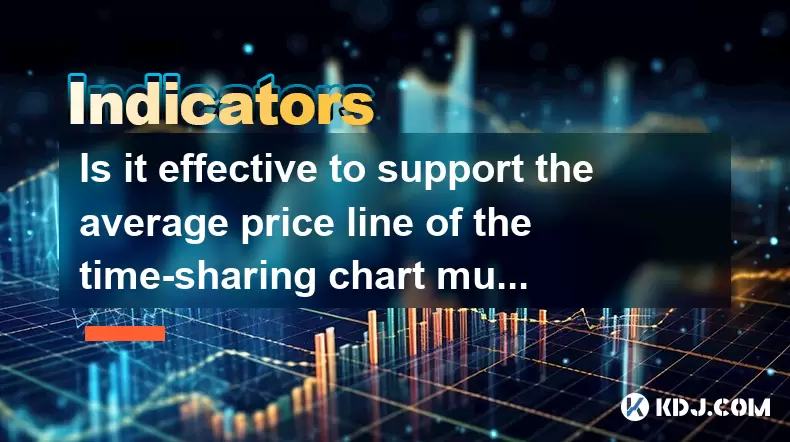
Is it effective to support the average price line of the time-sharing chart multiple times?
Jun 23,2025 at 01:36pm
Understanding the Average Price Line in Time-Sharing ChartsIn cryptocurrency trading, time-sharing charts refer to real-time price charts that display price movements over short intervals, often within a single trading day. Within these charts, the average price line, also known as the Volume Weighted Average Price (VWAP), is a commonly used technical i...
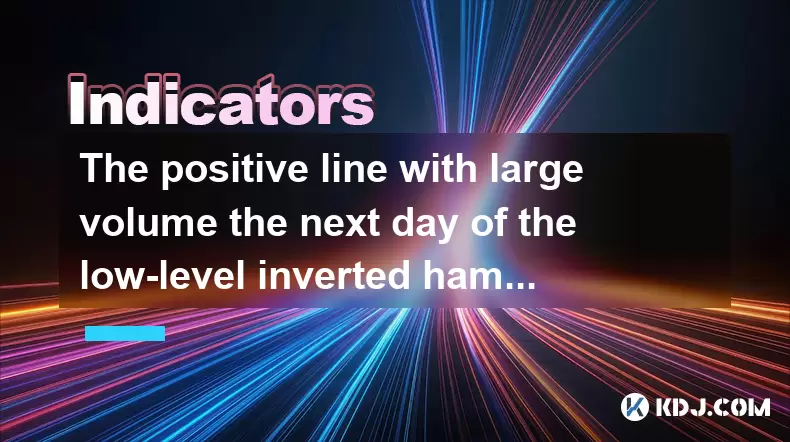
The positive line with large volume the next day of the low-level inverted hammer line confirms the reversal?
Jun 23,2025 at 01:21pm
Understanding the Low-Level Inverted Hammer LineThe inverted hammer line is a single candlestick pattern that typically appears at the end of a downtrend. It has a small real body near the bottom of the trading range and a long upper shadow, indicating that bulls attempted to push prices higher but were met with selling pressure. When this pattern forms...
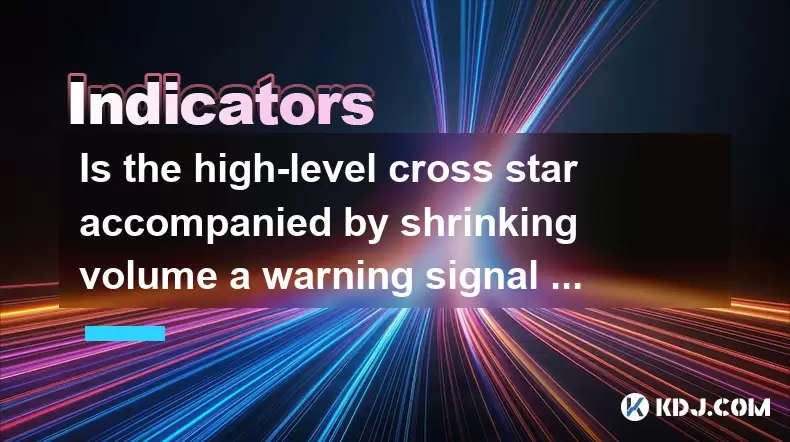
Is the high-level cross star accompanied by shrinking volume a warning signal of peaking?
Jun 23,2025 at 01:28pm
Understanding High-Level Cross Star PatternsIn the world of cryptocurrency trading, candlestick patterns are essential tools for technical analysis. One such pattern is the high-level cross star, which appears as a doji or near-doji candle at a significant resistance level. This pattern often indicates indecision in the market and can be interpreted as ...
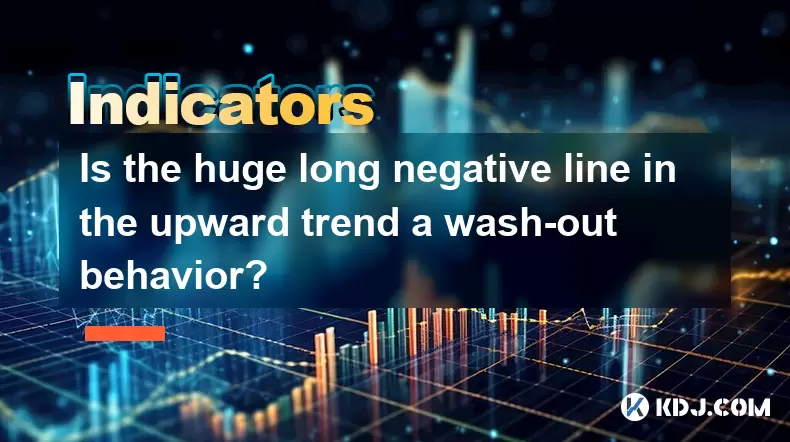
Is the huge long negative line in the upward trend a wash-out behavior?
Jun 23,2025 at 12:49pm
Understanding the Long Negative Candlestick in an Uprising TrendA long negative candlestick, often referred to as a long red or bearish candle, appearing during an upward trend can raise concerns among traders and investors. This pattern typically indicates a sudden and significant drop in price after a period of rising prices. It is often interpreted a...

Can the EXPMA golden cross stand on the 5-day line at the same time?
Jun 23,2025 at 11:42am
Understanding the EXPMA Indicator in Cryptocurrency TradingThe Exponential Moving Average (EXPMA) is a popular technical analysis tool used by cryptocurrency traders to identify trends and potential reversal points. Unlike simple moving averages, the EXPMA gives more weight to recent price data, making it more responsive to current market conditions. In...

Does the second surge in the RSI overbought zone induce more?
Jun 22,2025 at 08:35am
Understanding the RSI Overbought ZoneThe Relative Strength Index (RSI) is a momentum oscillator commonly used in technical analysis to measure the speed and change of price movements. It ranges from 0 to 100, with values above 70 typically considered overbought and values below 30 considered oversold. When the RSI enters the overbought zone for the firs...

Is it effective to support the average price line of the time-sharing chart multiple times?
Jun 23,2025 at 01:36pm
Understanding the Average Price Line in Time-Sharing ChartsIn cryptocurrency trading, time-sharing charts refer to real-time price charts that display price movements over short intervals, often within a single trading day. Within these charts, the average price line, also known as the Volume Weighted Average Price (VWAP), is a commonly used technical i...

The positive line with large volume the next day of the low-level inverted hammer line confirms the reversal?
Jun 23,2025 at 01:21pm
Understanding the Low-Level Inverted Hammer LineThe inverted hammer line is a single candlestick pattern that typically appears at the end of a downtrend. It has a small real body near the bottom of the trading range and a long upper shadow, indicating that bulls attempted to push prices higher but were met with selling pressure. When this pattern forms...

Is the high-level cross star accompanied by shrinking volume a warning signal of peaking?
Jun 23,2025 at 01:28pm
Understanding High-Level Cross Star PatternsIn the world of cryptocurrency trading, candlestick patterns are essential tools for technical analysis. One such pattern is the high-level cross star, which appears as a doji or near-doji candle at a significant resistance level. This pattern often indicates indecision in the market and can be interpreted as ...

Is the huge long negative line in the upward trend a wash-out behavior?
Jun 23,2025 at 12:49pm
Understanding the Long Negative Candlestick in an Uprising TrendA long negative candlestick, often referred to as a long red or bearish candle, appearing during an upward trend can raise concerns among traders and investors. This pattern typically indicates a sudden and significant drop in price after a period of rising prices. It is often interpreted a...

Can the EXPMA golden cross stand on the 5-day line at the same time?
Jun 23,2025 at 11:42am
Understanding the EXPMA Indicator in Cryptocurrency TradingThe Exponential Moving Average (EXPMA) is a popular technical analysis tool used by cryptocurrency traders to identify trends and potential reversal points. Unlike simple moving averages, the EXPMA gives more weight to recent price data, making it more responsive to current market conditions. In...

Does the second surge in the RSI overbought zone induce more?
Jun 22,2025 at 08:35am
Understanding the RSI Overbought ZoneThe Relative Strength Index (RSI) is a momentum oscillator commonly used in technical analysis to measure the speed and change of price movements. It ranges from 0 to 100, with values above 70 typically considered overbought and values below 30 considered oversold. When the RSI enters the overbought zone for the firs...
See all articles

























































































